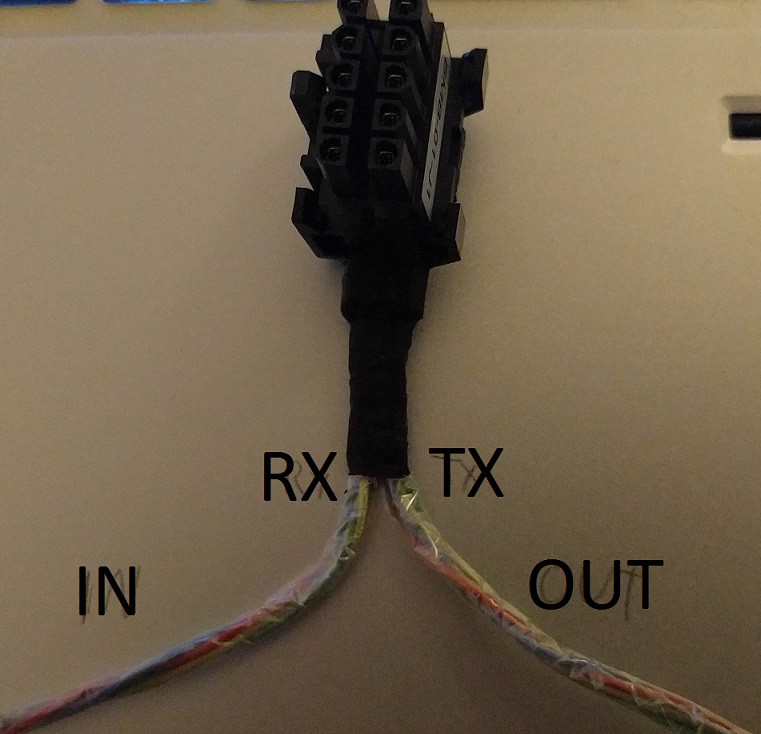I spent some more time tracing out the logic between the RF isolator and microcontroller to try and determine the actual function of the 4th channel on the isolator and just how the power down circuits work.
Ch4 does appear to be a fault line, it is connected, via a NAND gate to the FAULT_H pin on the BQ76 BMS IC, so this will drive the shared fault line (on pin 6 and 10 of the main connector) low in the case of an over temperature, over voltage or under voltage event. A diode is used to make it a dominant fault line, ie any fault on any module will force a fault state. This should work even if a module microcontroller stops responding (which would otherwise kill the daisychain UART communications.) Weirdly, the other pin of this NAND is derrived from a second NAND of the SDO pin and the RF com chip disable line. It's not clear to me what this achieves.

I also found the main connector (J1) part number by sorting through digikey, It looked like a Molex, that and the pins + spacing was enough to go on. Connector is Molex 15-97-5101, pins are 39-00-0038, retaining key is 15-97-9101.
So now it's pretty clear how the modules should be wired up to a controller. Here is an example for three modules (it can be extended to any number, up to 62 from what I can tell)


All this wiring is isolated from the cells, so the gnd and +5V can safely be on the 12V wiring potential in an automotive application.
A couple of the other team members, Collin and Tom are working on an Arduino sketch to interface with the serial protocol based on my earlier findings, this should now be ready to test out and get basic functionallity like voltage and current readings. https://github.com/collin80/TeslaBMS
Or if you have python and an FTDI board and just want to mess around, try the python script in the files section of this hackaday.io project.
 Jarrod
Jarrod
Discussions
Become a Hackaday.io Member
Create an account to leave a comment. Already have an account? Log In.
This project has been incredibly helpful. Thank you!!
Are you sure? yes | no